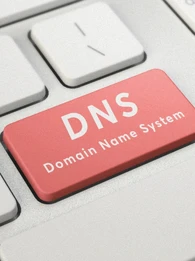
Enterprise IT is at a crossroads. While it’s an essential tool in helping organisations tackle climate change, its own environmental impact can’t be overlooked.
With renewed focus on climate change, organisations are now taking greater environmental, social and governance (ESG) responsibility. Many are turning to technology, realising the potential of digital transformation to unlock competitive advantage and achieve carbon reduction objectives.
But business leaders aren’t always aware that enterprise technology carries a hidden burden; it’s a huge generator of carbon emissions, with a current output equivalent to half of emissions from aviation and shipping, and set to rise to 14% of global carbon emissions by 2040.
Technology is an important, enterprise-wide aspect ripe for change, where leaders can take positive action quickly to meet their organisation’s sustainability aims, supporting rather than hindering global efforts towards net zero.
In fact digital transformation has such an integral part to play that Gartner suggests 80% of CIOs will have sustainable IT performance metrics by 2027.
Rethink IT from the ground up
Sustainable IT is more than just refreshing outdated infrastructure and integrating new green technologies. A fundamental change in organisational culture and operational habits is needed. Sustainable practices should be ingrained into daily operations and strategic decision-making processes, moving from sporadic initiatives to a consistent culture of ESG responsibility.
Business and IT leaders can take a number of practical steps to make a positive impact quickly and accelerate their ESG journey.
Six Steps Towards Sustainable IT
1. Data Centre Operations
Organisations can halve carbon emissions with smart data centres and cloud choices, advises McKinsey. Transition to data centres powered by renewable energy and choose those with the best power usage effectiveness – the closer the PUE value to 1, the more energy-efficient.
2. Cloud Computing Choices
Prioritise cloud migration over refreshing on-premise IT infrastructure to have the greatest impact. Beware of public cloud options criticised for poor environmental controls. Instead, take smaller providers into account who use 100% renewable energy at source and manage cloud solutions with optimal efficiency.
3. Embrace Infrastructure-as-a-Service (IaaS)
Have an immediate impact on ESG metrics by adopting the infrastructure-as-a-service (IaaS) model, thereby shifting infrastructure responsibility, power consumption and carbon footprint considerations to the provider. This also reduces real estate, hardware upgrades and equipment waste.
4. Energy-Efficient End Users
End-user devices account for a significant percentage of IT carbon emissions and electronic waste. Optimising the number of devices and extending their lifespan minimises environmental impact and running costs. Choosing thin clients or offering BYOD reduces power usage, emissions and waste as well as providing flexibility.
5. Rethinking Remote Working
Virtual desktop solutions like VDIPOD significantly cut down tech power usage, while delivering high-performance UX even for demanding design and visualisation apps. Making 89% better use of renewable energy at source, it reduces energy costs and limits the carbon emissions associated with traditional, power-hungry PCs.
6. Supply Chain Collaboration
Promote more responsible supply chains with tools that enable real-time collaboration and secure data sharing. Partner with IT providers who strengthen your supply chain sustainability with technology solutions powered by renewable energy sources and independent credentials such as carbon-neutral status.
The Business Case for Sustainable IT
The shift towards more sustainable business practices is gathering pace, partly fuelled by regulatory changes driving organisations to comply with stringent sustainability requirements across the UK, Europe and further afield.
Adopting sustainable technologies offers considerable benefits beyond regulatory compliance. Organisations leading the charge can strengthen their reputation and stakeholder relationships. Top performers influence investment decisions, attract and retain the best talent and win loyal customers.
The financial drivers for strong ESG performance are also significant. Companies that proactively integrate sustainable working practices enjoy market-leading EBITDA and profitability, standing out in today’s competitive market.
Commitment to helping create a low-carbon future is a vital component of strategic leadership in the digital age. In a world increasingly concerned with environmental and social impacts, the integration of sustainability into the corporate strategy is about leading with responsibility.
Sustainable IT is more than a technology upgrade to meet evolving business, stakeholder and regulatory demands - it’s a strategic step that propels organisations forward tackles environmental challenges head-on and sets the stage for businesses to tap into new opportunities for growth and innovation.









